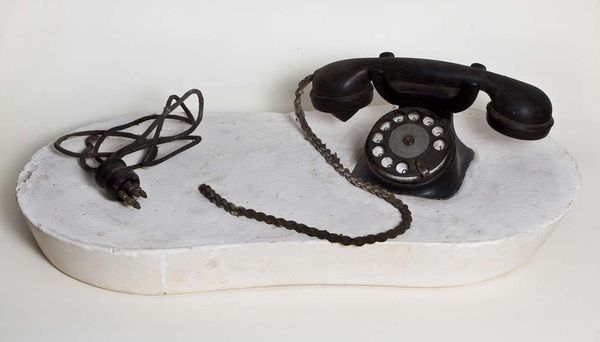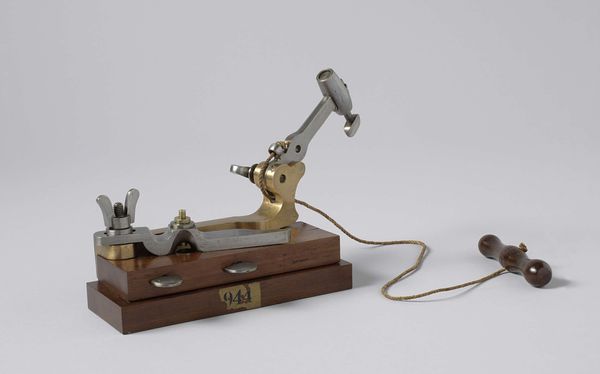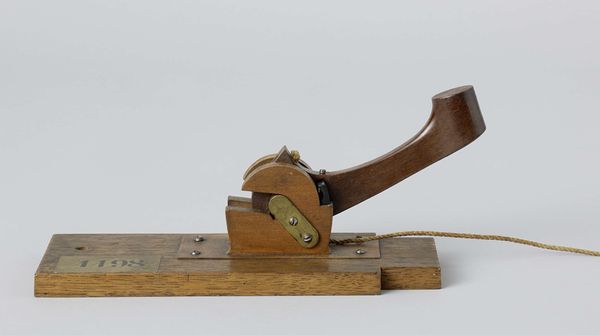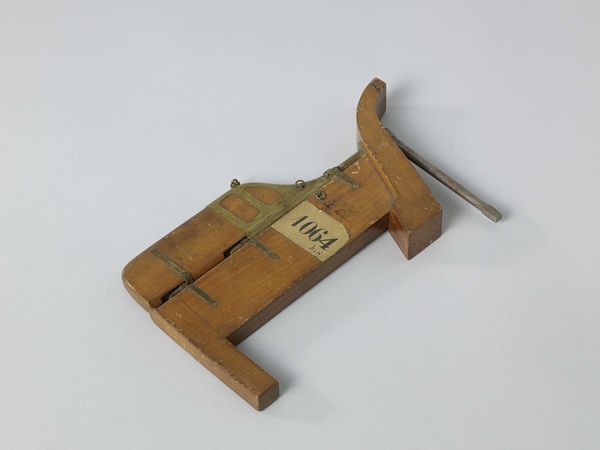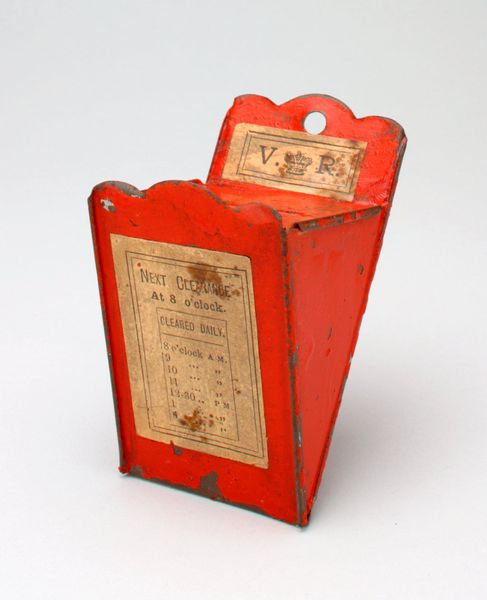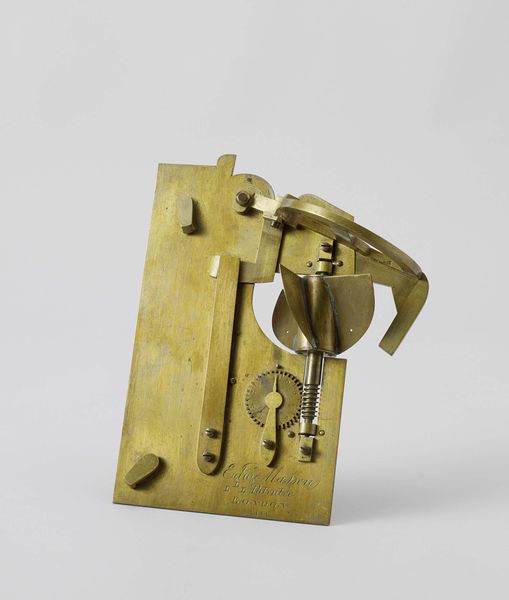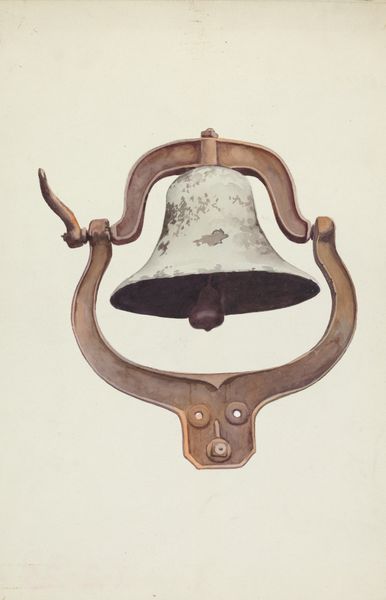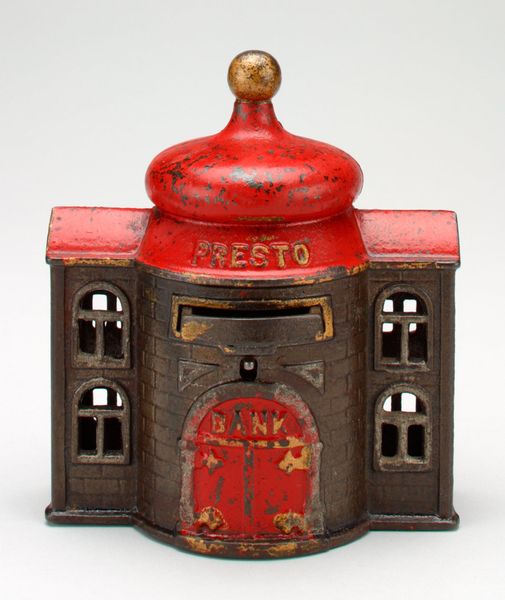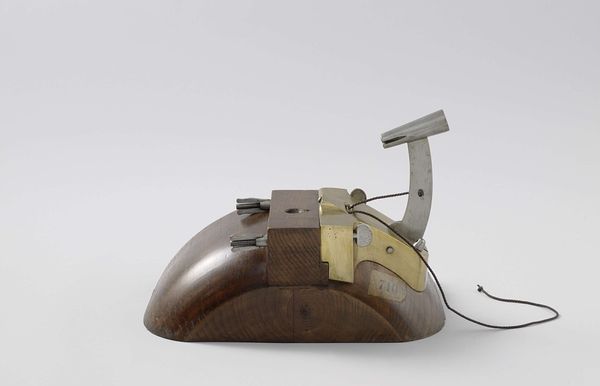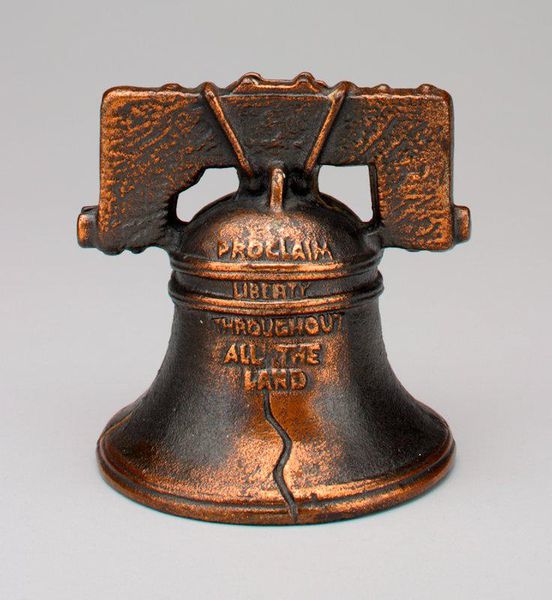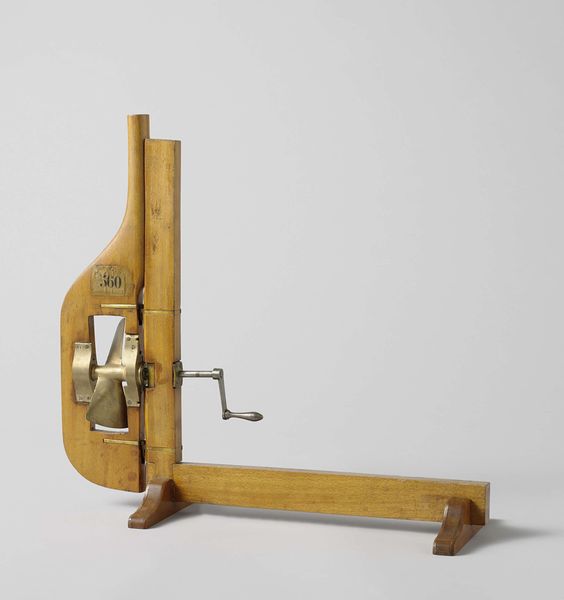
pigment, metal, found-object, photography
#
pigment
#
metal
#
found-object
#
photography
#
united-states
Dimensions: 3 1/2 x 7 1/2 x 6 1/8 in. (8.89 x 19.05 x 15.56 cm)
Copyright: No Known Copyright
Editor: So, here we have an early 1930s American artwork, an anonymous “Telephone-still bank,” comprised of metal and pigment and perhaps other found materials. It's playful but also carries a certain gravity, doesn't it? What significance do you see in such an object? Curator: It speaks volumes about aspirations, doesn’t it? Notice how this everyday object is transformed into a symbol of financial security. A telephone wasn’t as ubiquitous as it is today. Owning one symbolized connection, progress. And combined with a “bank”…it highlights an intersection between communication and economic power in the US during that period. Editor: Interesting! So the form is a common, accessible item, the telephone. Is there anything about the image that changes how it operates as a symbolic form? Curator: Note its charming obsolescence, too. That dial! Today a touch screen mediates communication. But look more deeply. That lovely red. The worn patina. These remind us how technology mediates relationships with others, a phenomenon still current today. Doesn’t the patina also evoke nostalgia, a longing for simpler, supposedly safer times? It carries many emotions within a seemingly simple design, doesn't it? What did you first notice? Editor: Well, I think the way the colours wear, revealing that the metal it's constructed of isn’t so solid…suggests that these modern tools and institutions are less secure and reliable than they appear on the surface. I suppose the 'bank' label adds to that now! Curator: Exactly. Visual elements enhance the metaphoric strength of a familiar object. What have we discovered? This "telephone-still bank” does far more than offer communication or safekeeping; it reveals shared cultural ideals and anxieties regarding societal systems still resonant now. Editor: So even a child's toy embodies complex meanings and can evoke emotions rooted in historical contexts. I’ll definitely look at these types of objects differently now.
Comments
No comments
Be the first to comment and join the conversation on the ultimate creative platform.
